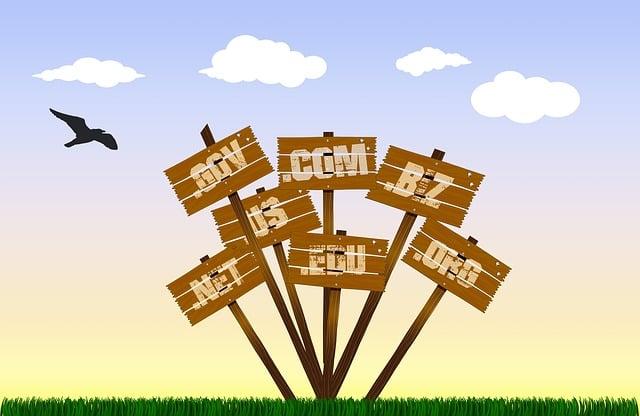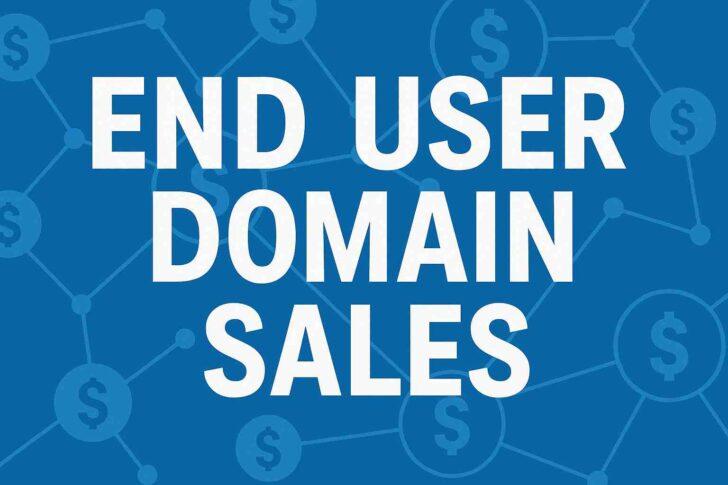Table of Contents
- Understanding the Domain Flipping Business Model
- Identifying Profitable Domain Names
- Strategies for Buying Low and Selling High
- Marketing Your Domain for Maximum Profit
- Navigating Legal Considerations in Domain Sales
- Q&A
- The Way Forward
Understanding the Domain Flipping Business Model
Domain flipping is a business model that revolves around buying domain names at a lower price and selling them for a profit. This model attracts many individuals due to its relatively low initial investment compared to other online ventures. The key to success in domain flipping is to identify domains that are likely to appreciate in value over time. Factors influencing a domain’s value include keywords, length, and brandability. A strong domain name can enhance a website’s visibility, hence making it more valuable.
When diving into domain flipping, it’s vital to implement effective strategies that set you apart from the competition. Successful flippers often engage in thorough keyword research and market analysis to find opportunities. This involves:
- Identifying trending topics that can indicate future demands for specific domains.
- Utilizing domain auction sites to find undervalued domains.
- Networking with industry professionals to gain insights and develop valuable contacts.
Furthermore, understanding the different types of domains can expand your opportunities. There are various categories such as .com, .net, and the increasingly popular .io, each attracting different buyer demographics. Below is a simple table that categorizes these domains based on their general market trends:
| Domain Extension | Common Use | Market Trend |
|---|---|---|
| .com | Business & E-commerce | Stable Demand |
| .net | Technology Companies | Moderate Demand |
| .io | Tech Startups | Growing Popularity |
By leveraging these insights and strategies, individuals can navigate the domain flipping business with a clearer understanding of their target market and potential profits.


Identifying Profitable Domain Names
When venturing into the domain flipping business, identifying domains that hold profitable potential is crucial. The process starts with keyword research, where you not only seek popular search terms but also niche markets that have less competition. Capitalizing on emerging trends can prove fruitful; for instance, following tech advancements or viral cultural phenomena often leads to domain names that businesses eagerly seek. Tools like Google Trends and keyword research tools can illuminate these opportunities. Another factor to consider is the length and memorability of the domain name. Names that are short, catchy, and easy to spell are typically more desirable. Think about great brands—many have succinct domain names that are instantly recognizable. Additionally, domains that feature common extensions like .com often attract higher bids. Aim for names that can evoke associations related to specific industries or products. Here are some characteristics of profitable domain names:- Descriptive: Clearly relates to a product or service.
- Unique: Stands out from competitors.
- Short: Ideally 1-2 words.
- Easy to spell: Reduces chances of misspelling.
| Factor | Description | Value Rating |
|---|---|---|
| Domain Extension | Prefer .com or industry-specific extensions. | High |
| Keyword Relevance | Includes keywords that align with target market. | Medium |
| Length | Short and memorable names attract more interest. | High |
| Market Trends | Aligns with current or emerging trends in niche. | Variable |


Strategies for Buying Low and Selling High
In the domain flipping business, identifying undervalued domains is crucial for maximizing your profits. Start by researching domains that are either expired or have low traffic but significant potential. Utilize tools like Google Trends and Keyword Planner to discover trending keywords that can lead you to valuable domain names. Here are some strategies to consider:
- Focus on Keywords: Domains that reflect popular search terms generally attract buyers.
- Short and Memorable: Aim for succinct domain names that are easy to spell and remember; these are more appealing to potential buyers.
- Niche Domains: Explore specific niches where you have expertise or interest. Niche markets often have less competition, making it easier to flip domains.
After acquiring promising domains, the next step is to enhance their visibility and value before selling. This process may involve building a basic website, optimizing for SEO, and developing content relevant to the niche. Consider the following tactics:
| Strategy | Purpose |
|---|---|
| SEO Optimization | Improve search engine ranking and visibility. |
| Quality Content Creation | Attract visitors and establish authority in the niche. |
| Social Media Marketing | Generate awareness and direct traffic to your domain. |
timing your sale can significantly influence your profit margin. Observe market trends and demand to determine the best time to list your domain. Consider attending online auctions or using domain marketplaces to reach a broader audience. Here are essential tips when it comes to selling:
- Set a Competitive Price: Use appraisal tools to gauge a fair market price based on domain popularity and resale potential.
- Highlight Unique Features: Make sure to underscore any unique attributes or previous traffic your domain has received.
- Network with Other Flippers: Engaging with this community can provide useful insights and potential buyers.


Marketing Your Domain for Maximum Profit
To maximize the profit from your domain investments, it’s essential to adopt a multi-faceted marketing strategy. Start by showcasing your domain on professional platforms and forums designed for domain trading. Engage with potential buyers by joining communities on websites such as Flippa, Sedo, and GoDaddy. Present your domain with a catchy description that highlights its benefits, potential use cases, and why it stands out from others. Utilize social media channels, especially LinkedIn and Twitter, to connect with industry experts and enthusiasts who may be interested in purchasing a lucrative domain.
Consider leveraging SEO techniques to enhance the visibility of your domain listings. Optimize your sales page by using relevant keywords that potential buyers are likely to search for. Implement meta descriptions that appeal to the audience’s desire for profitable investments. Additionally, creating content—like blog posts or infographics—that provides insights into the domain market can build your authority and attract organic traffic. This strategy can help establish credibility and drive more interested buyers to your listings.
nurture relationships with your potential customers through personalized outreach. Use email marketing to follow up with leads who have shown interest in your domains. A concise yet informative email can include market trends or success stories about domains similar to those you’re offering. You can also create an exclusive newsletter that provides updates on new domain acquisitions or spotlight features of certain domains in your portfolio. Keeping potential buyers engaged with valuable content not only builds trust but also increases the likelihood of closing a sale.


Navigating Legal Considerations in Domain Sales
When engaging in domain sales, it’s crucial to understand the legal landscape that governs this lucrative market. Failure to navigate these waters carefully can lead to disputes and potentially costly litigation. Therefore, consider the following legal aspects as you embark on your domain flipping journey:
- Intellectual Property Rights: Always ensure that the domain you are buying or selling does not infringe on existing trademarks or copyrights. Conduct thorough research to confirm that your domain name doesn’t violate any intellectual property laws.
- U.N.I.C.E.F Registration: If a domain name has significant potential for profit, consider registering it with a recognized organization. This protects your ownership and could facilitate a smoother transaction process.
- Domain Transfer Agreements: Draft clear and comprehensive agreements to formalize the selling process. Outline the terms of sale, payment methods, and conditions for transfer to avoid future disputes.
Additionally, protecting yourself from fraud and ensuring a legitimate sale should be a priority. Use secure payment methods and trusted escrow services, which help safeguard both parties involved in the transaction. To streamline this aspect, you can leverage some reputable platforms that facilitate secure domain sales:
| Platform | Features | Fees |
|---|---|---|
| Escrow.com | Secure transactions, buyer and seller protection | Varies by transaction size |
| Sedo | Marketplace for buyers and sellers, appraisal services | Commission on sale |
| Flippa | Marketplace for websites and domains, bidding options | Listing fee + commission |
Lastly, maintaining a good reputation in the domain flipping industry is key to thriving in this market. Keep clear communication with your buyers and sellers and be transparent about your practices. Addressing potential disputes amicably not only protects your interests but also enhances your credibility as a domain seller.

